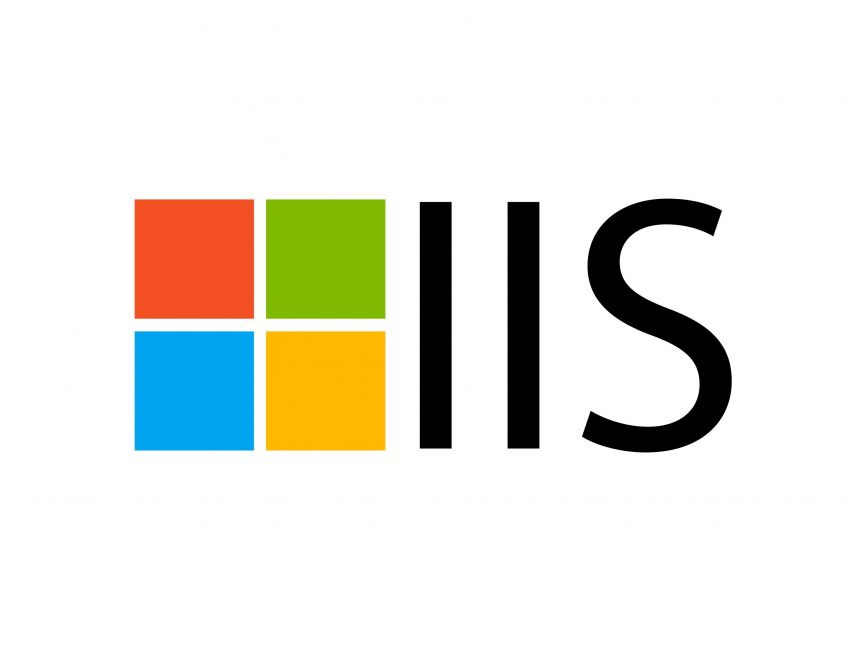Configuring Idle Timeout and Recycling Schedules for IIS Application Pools
Jul 16, 2025 am 01:39 AMConfiguring idle timeouts and recycle schedules for application pools in IIS optimizes performance and resource management. 1. Idle timeout is used to close the application pool when there is no request. The default is 90 minutes, which is suitable for low access scenarios. If the settings are too short, it may cause the first access delay. It is recommended to adjust according to the traffic. If the intranet system is set to 30 minutes, the external network will remain the default or longer. The operation steps include opening the IIS manager, selecting the application pool, and modifying the "Idle timeout (minutes)". 2. Regular recycling can release resources during low peak periods and prevent leakage. It is commonly set to 2 a.m. Enable "Overlapping Recycling" to reduce interruptions; the setting method is to add recovery time points in "Advanced Settings". 3. It is recommended to analyze the request frequency and resource usage in combination with logs and monitoring, and continuously optimize the configuration to ensure a balance of stability and efficiency.

Configuring idle timeouts and recycling plans for application pools in IIS is an important step in optimizing server performance and resource management. Setting these parameters rationally can avoid resource waste while ensuring applications respond quickly when needed.

1. Understand the Idle Timeout
Idle timeout refers to the fact that when an application pool does not have any request processing within a specified time, IIS will automatically close the application pool to save system resources.

- Default value : 90 minutes
- Applicable scenarios : suitable for applications with low access volume, such as internal management systems or test environments.
- Note : If the idle time is set too short, it may cause delays when the user first access is due to the application that needs to be restarted.
It is recommended to adjust this value based on actual business traffic. For example, the enterprise intranet system can be set to 30 minutes, while external service websites are recommended to keep the default or longer.
Operation steps:

- Open IIS Manager
- Select the corresponding application pool
- Click "Advanced Settings"
- Modify the "Idle Timeout (Minutes)" item
2. Set up a Recycling Schedule
In addition to recycling based on idle state, you can also set up a timed recycle application pool. This helps free up memory, restart processes that may have problems, and prevent resource leaks caused by long-term operation.
- Common settings : Recycling is performed at 2 a.m. every day
- Advantages : Restart can be completed during the peak period without affecting the user experience
- Note : If there is an ongoing request during recycling, the operation may be interrupted. It is recommended to use it in conjunction with the "request queue" mechanism
The setup method is as follows:
- Find Recycle in Advanced Settings in Application Pool
- Expand "Recycling Time (Time-based Recycling)"
- Add one or more time points, such as
02:00:00
If your application has extremely high availability requirements, consider enabling the "overlapping recycling" function to allow new and old work processes to alternately run and reduce interruptions.
3. Adjust with logs and monitoring
Relying solely on default settings may not meet the needs of complex businesses. It is recommended to continuously optimize through the following methods:
- View request frequency in IIS logs and analyze peak and trough time periods
- Use Performance Monitor (PerfMon) to observe memory usage and CPU usage
- Use event viewer to track application pool recycling events to confirm whether they are frequently triggered
If you find that the application pool is recycled multiple times a day, but there is no significant performance degradation, it may be that the setup is too aggressive; on the contrary, if it is not recycled once a few days, you may want to consider introducing regular recycling to free up resources.
Basically that's it. Configuring Idle Timeout and Recycling Schedule is not complicated, but it is easy to ignore details. As long as you adjust flexibly according to the actual load, you can find a balance between stability and resource efficiency.
The above is the detailed content of Configuring Idle Timeout and Recycling Schedules for IIS Application Pools. For more information, please follow other related articles on the PHP Chinese website!

Hot AI Tools

Undress AI Tool
Undress images for free

Undresser.AI Undress
AI-powered app for creating realistic nude photos

AI Clothes Remover
Online AI tool for removing clothes from photos.

Clothoff.io
AI clothes remover

Video Face Swap
Swap faces in any video effortlessly with our completely free AI face swap tool!

Hot Article

Hot Tools

Notepad++7.3.1
Easy-to-use and free code editor

SublimeText3 Chinese version
Chinese version, very easy to use

Zend Studio 13.0.1
Powerful PHP integrated development environment

Dreamweaver CS6
Visual web development tools

SublimeText3 Mac version
God-level code editing software (SublimeText3)
 Configuring Request Limits and Connection Timeouts in IIS
Jul 08, 2025 am 12:36 AM
Configuring Request Limits and Connection Timeouts in IIS
Jul 08, 2025 am 12:36 AM
To limit the size of client requests, the maxAllowedContentLength parameter can be modified in web.config, such as setting it to 104857600 (100MB), and synchronizing the maxRequestLength of ASP.NET at the same time; to reasonably set the connection timeout time, it can be modified through the IIS manager or appcmd.exe command, with the default of 120 seconds, and the API scenario is recommended to set it to 30-90 seconds; if the request queue is full, you can increase MaxClientConn and QueueLength, optimize application performance, and enable load balancing to relieve stress.
 Configuring HTTP Response Headers for Caching and Security in IIS
Jul 07, 2025 am 12:23 AM
Configuring HTTP Response Headers for Caching and Security in IIS
Jul 07, 2025 am 12:23 AM
Configuring HTTP response headers in IIS to optimize cache and improve security can be achieved by setting cache-related headers and adding security response headers. 1. Set cache-related headers: By configuring the clientCache element in the web.config file, set the Cache-Control and Expires headers for static resources, for example, use cacheControlMaxAge to specify the cache time, and fine-grained control can also be performed for specific file types (such as .jpg), but avoid HTML page caching for too long. 2. Add security-related headers: Configure X-Content-Type-Optio through customHeaders in web.config
 Configuring Directory Browsing Permissions and Behavior in IIS
Jul 10, 2025 pm 02:08 PM
Configuring Directory Browsing Permissions and Behavior in IIS
Jul 10, 2025 pm 02:08 PM
ToenableandcustomizedirectorybrowsinginIIS,firstinstallandenabletheDirectoryBrowsingfeatureviaServerManagerandIISManager;next,customizetheappearanceusingheaderandfooterHTMLsnippets;thenconfiguredefaultdocumentstopreventunintendeddirectorylistings;fin
 Configuring Shared Configuration for Multiple IIS Servers in a Web Farm
Jul 11, 2025 am 01:50 AM
Configuring Shared Configuration for Multiple IIS Servers in a Web Farm
Jul 11, 2025 am 01:50 AM
SharedconfigurationinIISallowsmultipleserverstouseacentralizedapplicationHost.configfile,ensuringconsistencyacrossawebfarm.1.Itenablesallserverstopointtoasharedconfigurationlocation.2.SetupinvolvesusingaUNCpath,enablingthefeatureinIISManager,andimpor
 Configuring Authentication Methods (Windows, Forms, Basic) in IIS
Jul 09, 2025 am 12:51 AM
Configuring Authentication Methods (Windows, Forms, Basic) in IIS
Jul 09, 2025 am 12:51 AM
Windows authentication is suitable for internal applications and is automatically authenticated through domain accounts; the steps are to open IIS Manager, select a site, enable Windows authentication, and ensure HTTPS is used. Forms authentication is suitable for custom login pages. You need to configure the login URL and timeout time in web.config, and develop a login page to verify users, encrypt your password and use HTTPS. Basic authentication is lightweight but not secure. It is only used when HTTPS is enabled. It needs to be enabled in IIS and cooperate with local or domain accounts. Password leakage is often caused by ignoring HTTPS.
 Managing MIME Types for Specific File Extensions in IIS
Jul 08, 2025 am 02:07 AM
Managing MIME Types for Specific File Extensions in IIS
Jul 08, 2025 am 02:07 AM
MIME type is a mechanism by which the server identifies file content types, and missing or incorrect configuration can cause resource loading to fail. There are two main ways to manage MIME types with specific extensions in IIS: 1. Add or modify them through the IIS manager graphical interface; 2. Configure in the web.config file. Common MIME types that need to be added manually include .webmanifest, .woff2, .svg, .mp4 and .pdf. Notes include inheritance issues, IIS version differences and browser cache impact. Proper configuration is essential to ensure that modern web resources are loading properly.
 Using appcmd.exe for IIS Command-Line Administration Tasks
Jul 14, 2025 am 01:11 AM
Using appcmd.exe for IIS Command-Line Administration Tasks
Jul 14, 2025 am 01:11 AM
appcmd.exe is a command line tool that comes with IIS7 and above, which can be used to efficiently manage IIS. 1. Can be used to manage sites and applications, such as starting and stopping sites (such as appcmdstopsite/site.name:"MySite"), list running sites, and add or delete applications. 2. Configurable application pools, including creating (appcmdaddapppool/name:MyAppPool), setting .NETCLR version (appcmdsetapppool/apppool.name:MyAppPool/managedRuntimeVersion:v4
 Enabling Gzip and Brotli Compression in IIS
Jul 16, 2025 am 12:46 AM
Enabling Gzip and Brotli Compression in IIS
Jul 16, 2025 am 12:46 AM
Enabling Gzip and Brotli compression can improve website performance. The configuration steps are as follows: 1. Enable static and dynamic content compression in IIS; 2. Modify the web.config file to enable Gzip compression and adjust dynamic compression settings; 3. Download and install the Brotli module and configure the relevant MIME types; 4. Use browser developer tools to verify whether Content-Encoding is effective; 5. Pay attention to issues such as MIME type coverage, cache impact, HTTPS compatibility, and server resource occupation. After correct configuration, it can effectively reduce the amount of data transmitted and speed up page loading.






